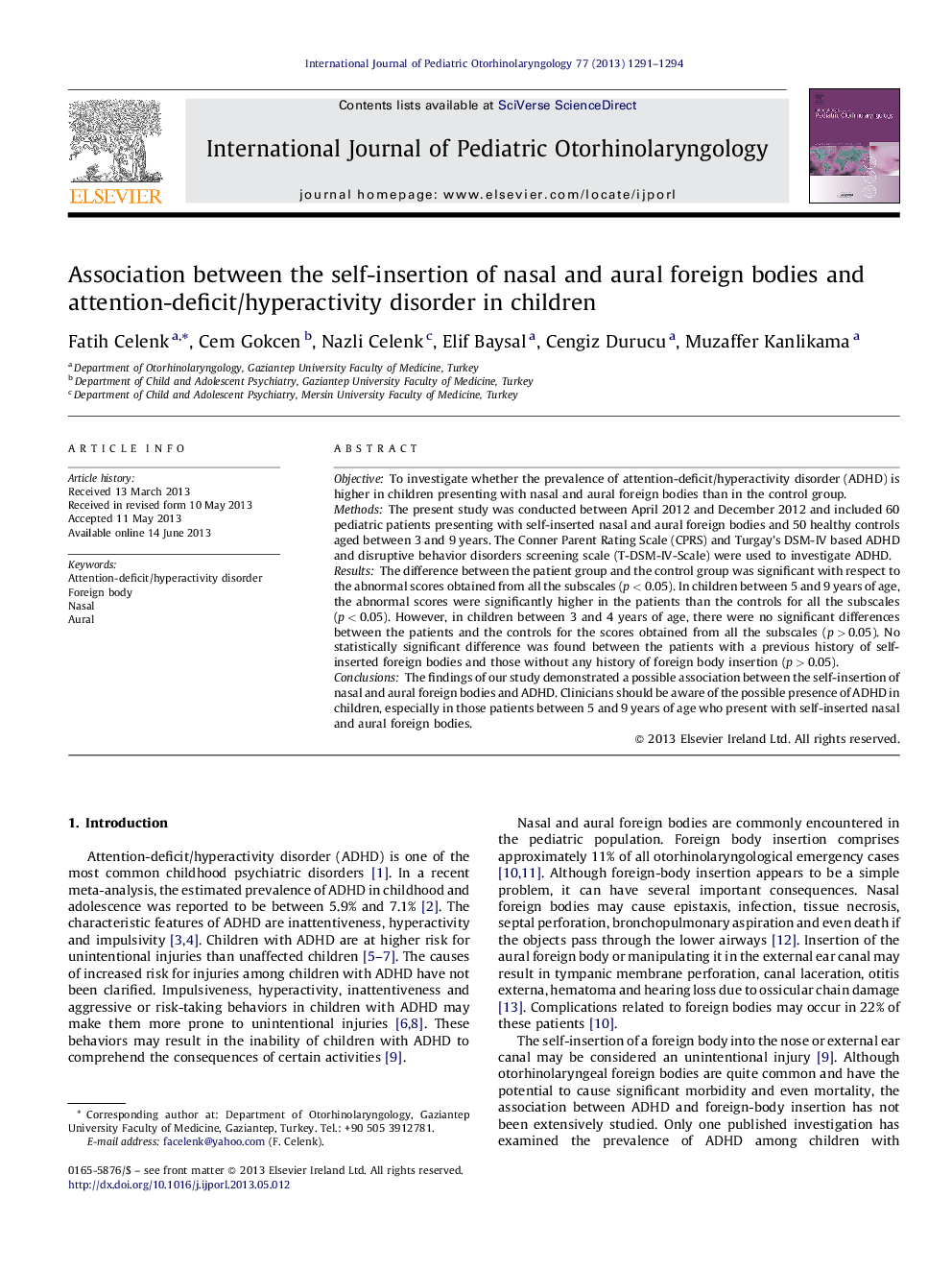| Article ID | Journal | Published Year | Pages | File Type |
|---|---|---|---|---|
| 4113048 | International Journal of Pediatric Otorhinolaryngology | 2013 | 4 Pages |
ObjectiveTo investigate whether the prevalence of attention-deficit/hyperactivity disorder (ADHD) is higher in children presenting with nasal and aural foreign bodies than in the control group.MethodsThe present study was conducted between April 2012 and December 2012 and included 60 pediatric patients presenting with self-inserted nasal and aural foreign bodies and 50 healthy controls aged between 3 and 9 years. The Conner Parent Rating Scale (CPRS) and Turgay's DSM-IV based ADHD and disruptive behavior disorders screening scale (T-DSM-IV-Scale) were used to investigate ADHD.ResultsThe difference between the patient group and the control group was significant with respect to the abnormal scores obtained from all the subscales (p < 0.05). In children between 5 and 9 years of age, the abnormal scores were significantly higher in the patients than the controls for all the subscales (p < 0.05). However, in children between 3 and 4 years of age, there were no significant differences between the patients and the controls for the scores obtained from all the subscales (p > 0.05). No statistically significant difference was found between the patients with a previous history of self-inserted foreign bodies and those without any history of foreign body insertion (p > 0.05).ConclusionsThe findings of our study demonstrated a possible association between the self-insertion of nasal and aural foreign bodies and ADHD. Clinicians should be aware of the possible presence of ADHD in children, especially in those patients between 5 and 9 years of age who present with self-inserted nasal and aural foreign bodies.
